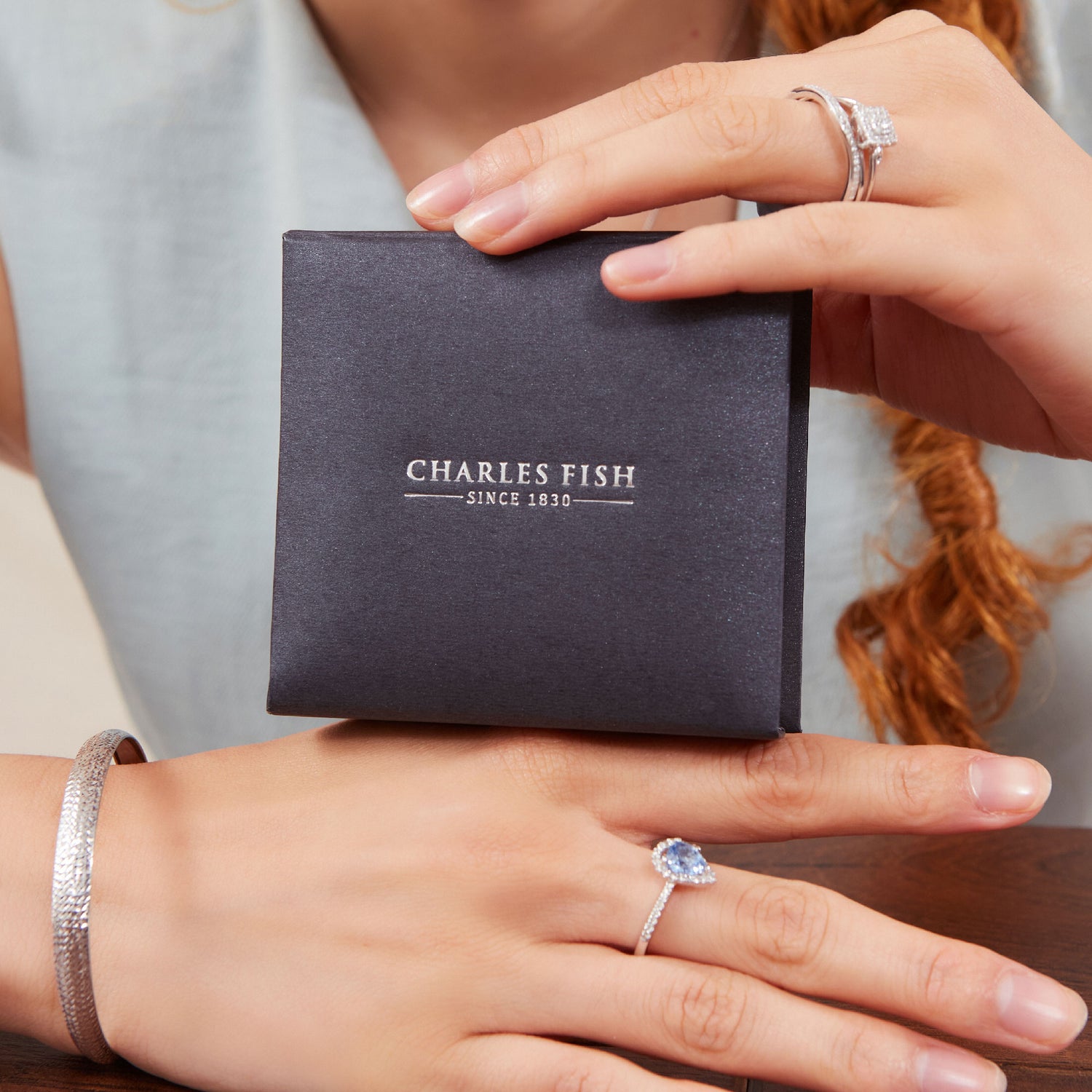
'It's one small step for man….'
With that single step, the crew cemented themselves in history, and the Speedmaster secured itself as the spacer's watch. Earning the nickname "The Moonwatch" and becoming a vital piece of kit and the go-to choice for every astronaut worth their salt. The Apollo program, first conceived under President Eisenhower's administration, was the follow-up to the highly successful (both in execution and public opinion) Mercury program, which put the first Americans in space. The Apollo missions sparked the global space race, put the first man on the moon, and continue to be held as one of the pinnacles of human technological achievement.
With last year's announcement of NASA's Artemis program, aiming to put the first woman and person of colour on the moon, almost 50 years since the last Apollo mission touched down, let's take a look back to see how a twenty-three-year-old Swiss man took Omega to the stars.
The History of Omega
Louis Brandt set up La Generale Watch Company, the precursor to Omega SA, with a passionate dedication to developing the most accurate watches possible. Through to his death in 1879, he gained a dazzling reputation for high-quality watches throughout Switzerland and Europe, only to be eclipsed when his sons, Louis-Paul and César, under the name Louis Brandt & Fils, moved to the bustling town of Biel/Bienne where the Omega headquarters stands to this day.
Possibly the pivotal point for Louis-Paul and César was the creation of the company namesake movement – the 19-ligne calibre. Extremely accurate, with precise series-produced movements able to be replaced by any watchmaker worldwide. The brothers crowned it the "Omega", setting a new standard for watchmaking. By 1903, La Generale Watch Company had become OMEGA Watch Co and Switzerland's largest producer of finished watches.
But the brothers didn't stop there; they continued to innovate and improve, creating models that defined the watch world and spurred the company into the giant we know today.

1931 Omega set precision records at the Geneva Observatory in all six trials. Just one year later, they became the first watchmakers to time an entire Olympic games at the Los Angeles Summer Olympics. 1932, the release of the OMEGA Marine, the first commercially available diver's watch. 1936, with that same movement (adjusted by Alfred Jaccard), they set the precision record at the Kew Observatory, just 2.2 points from perfection, a record still unbeaten to this day.
These feats continued, almost unmatched, through the 1930s and 40s. Omega produced the "Nurses Watch", used by WWII medics to time pulses. Their "Magic Eye" photoelectric system gave us photo finishes at the Olympics. The company's centenary and the release of the Seamaster saw the seminal watch bolted to the outside of Canadian Pacific Airways flight 302 where, after 9 hours exposed to the adverse weather at 20,000 ft, it didn't lose a second.
This dedication to precise timing in any conditions became the mantra of operation at Omega, directly leading to the triumvirate: The Seamaster 300, The Railmaster and the one we really want to talk about, the Speedmaster. Known jointly as the "Professional Collection", models were aimed to dominate their fields. The CK2913 Seamaster 300 was aimed at professional divers and rated to a 300-metre depth; the CK2914 Railmaster (paramagnetically rated to 1000 gauss) proved useful for engineers and scientists. In contrast, the Speedmaster was ordinally aimed at the ground, not the stars. With a 1/5th second chronograph, a 33mm tachymeter engraved bevel, a 12-hour totaliser and its signature "Broad Arrow" hand – which only ran for two years – it was a competent, extremely legible, tool watch, sought after for high precision sports and racing timing and cemented Omega as the official timekeeper of the Olympic games.
It was all of these features that brough it to the attention of the astronauts.
It was a Speedmaster Professional 2998 that Wally Schirra wore onboard the Sigma 7 on October 3rd, 1962, during his 9-hour orbit of Earth. Not officially approved by NASA, Schirra took his personal Speedy on the Mercury mission, where it continued to tic away perfectly in zero-G throughout his 295 total hours in space, aboard both Gemini and Apollo missions.
NASA's Torture Testing
One year after the launch of the first Apollo mission, NASA realised they were still missing one essential piece of kit: a watch. Unconvinced about the digital timekeeping being able to survive the harsh environment in space, NASA sent out to manufacturers for their best, and four answered the call - Omega, Longines-Wittnauer, Rolex and Hamilton.
Now, Hamilton fell at the first hurdle. NASA asked for a wristwatch, and they sent a pocket watch, so were immediately thrown out of the competition for not reading the brief. Still, NASA was left with three viable contenders: the Rolex 6238, the Longines-Wittnauer 242T, and the Omega Speedmaster Professional 105.012.
With 36 and a half years of experience, it was Jim Ragan put the watches through what he called, "The most extreme tests you could do to a piece of hardware."
These 'torture tests' were designed to emulate the extreme fluctuations in temperature and pressure the timepieces were likely to experience on the missions. Each watch was examined for its reliability in: acceleration, decompression, humidity, high pressure and temperature tests, which could be as high as 115 to minus 115 degrees Celsius. Both the Rolex 6238 pre-Daytona and the Longines-Wittnauer 242T failed the initial trial: a thermal vacuum. By March 1965, only the Speedy passed each and every test and became the only watch to be officially certified by NASA.

Jim Ragan
Unfortunately, no one told Omega of their success. The first the brand knew of it was watching the footage of the Gemini IV mission with the rest of the world. Circling the Earth sixty-six times over four days, Ed White performed the historic 20-minute spacewalk, where he hung in the vacuum of space with nothing but a 23ft tether around his waist and his Speedmaster Professional around his wrist. Ed White died not two years later in the tragic Apollo 1 Launchpad fire but will be forever remembered for those first courageous steps into the void.
The Speedmaster was now a pre-requisite for any space flight. 1965, when Commander Neil Armstrong, Command Module Pilot Michael Collins, and Lunar Module Pilot Buzz Aldrin touched down on the moon surface, Armstong's Speedmaster was left hanging in the Lunar module because, as feared, the digital clock readout had malfunctioned. This mission earned the Speedy the nickname "The Moonwatch", though if we're being pedantic, the only true "Moonwatch" is Buzz Aldrin's. The only one to actually travel to the moon's surface, Buzz Aldrin arranged for his Speedy to be delivered to the Smithsonian Air and Space Museum in Washington DC in the early 70s after his return to Earth. However, it was 'lost in transit', and its location is still unknown to this day, with many speculating it was stolen on the journey.
The Speedmasters onboard were always expected to be kept in reserve, to be mechanical backups to the precise digital equipment in case of significant malfunctions. This proved to have been the smart move during the 1970 Apollo 13 mission. An oxygen tank exploded in the control module, aborting the mission and giving us the famous "Houston, we've had a problem" quote. Moving to the lunar lander and working to save as much power and oxygen as possible, the crew were able to stabilise the ship but were left with a much bigger problem. They had drifted roughly 60-80 nautical miles off-course. Any attempt for them to make re-entry at that angle would cause them to 'skip' off the Earth's atmosphere and go careening into space. It was down to Jack Swigert, Command Module Pilot, to release a 14-second manual burst to allow for safe re-entry. Swigert could not rely on the digital timers and used his Omega Speedmaster Professional's (105.012-66) chronograph function to time the lifesaving manoeuvre, leading to splash down in the South Pacific on April 7th with all three members surviving.
For its contributions to the success of human space flight missions, NASA awarded Omega their prestigious Silver Snoopy award, with Omega releasing three commemorative Speedmaster Snoopy watches in 2003, 2017 and 2020.
Over 175 years, Omega has proved its mastery over the track, the sea, the sky and the stars. They have been instrumental in some of the most remarkable feats of human engineering and some of humanity's greatest triumphs. And they continue to do so, working with NASA on the upcoming Artemis missions and producing excellent commemorative pieces for missions past.
Take the Omega Speedmaster Professional 311.30.42.30.01.002, created to mark the 40th anniversary of Apollo II and Armstrong's famous first steps. It has a 42mm steel case with a black tachymeter bezel reminiscent of space itself and comes fitted with the classic steel Speedmaster bracelet. It has a matt black dial with luminescent stick batons, with the Apollo 11 patch found within the chronograph seconds sub-dial and engraved on the case back.

Or this limited-edition Omega Speedmaster Gemini IV 40th Anniversary 3565.80.00, a tribute to the Gemini IV mission and Ed White's incredible spacewalk. Created to commemorate the 40th anniversary, it has a 42mm stainless steel case, crown, pushers and bezel, with a blue tachymeter insert. It is attached to a signature steel Speedmaster bracelet with a fold-over clasp. It has a blue dial with white guilloche chronograph sub-dials. At 12 O'clock, the years of the anniversary are applied to the dial in red. Finished with silver luminescent indexes and hands. It has a commemorative red case back, with reference to Gemini 4 and Ed White's spacewalk.

By Reuben Loftus













